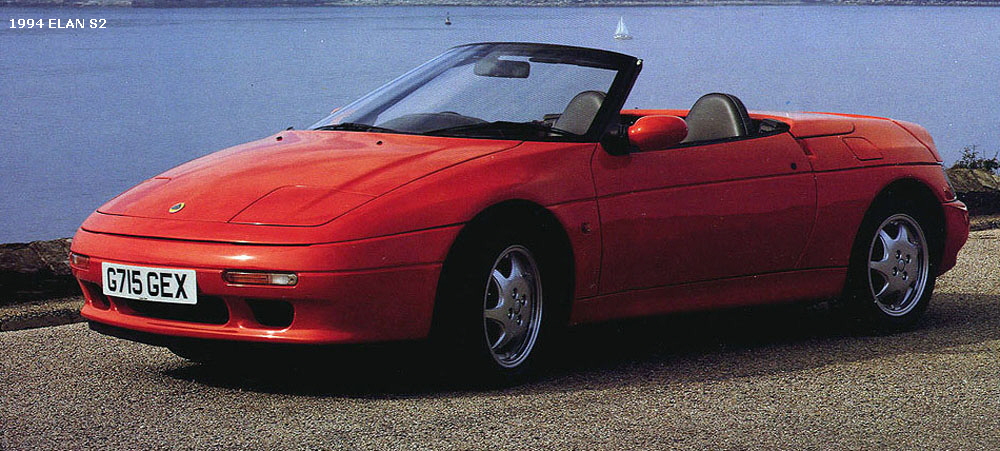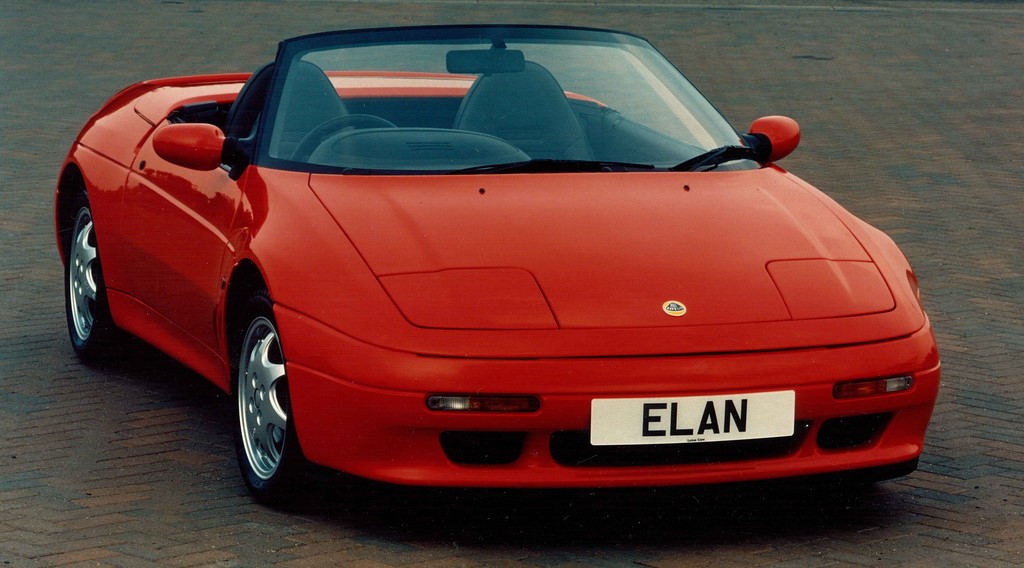
With General Motors taking ownership of Lotus from 1986, the business needed a new small car. Such a car – the thinking was for a ‘new Elan’ – would sit below the larger and more expensive Esprit and Excel models.
The big idea for this new car was that it would be front-wheel drive. Ditching the traditional front engine/rear-wheel drive layout would appeal to new generation of potential Lotus customers. It would provide sure-footed handling and tap into the popularity of the hot-hatches of the era.
The priority for Lotus was to find a new powertrain. A new-generation 1.6-litre straight-four in both naturally aspirated and turbo versions with an excellent power-to-weight ratio was identified from within the GM portfolio, and so the project was given the green light. Peter Steven’s ‘cab-forward’ design wasn’t to everyone’s liking but was aerodynamically effective.
Given the Type number 100 and the project name during development of M100, the Elan went on sale in 1989. Feedback from the media was initially positive and pent-up demand meant more than 1,200 had been sold by the end of 1990. The car picked up a prestigious award from the Design Council.
However, it was ultimately not a commercial success. The front-wheel drive layout meant the Elan the traditional ‘pure’ Lotus dynamics were missing and it was too expensive to build, particularly when it had to be reengineered to meet changing USA crash regulations. That the engine was branded Isuzu – a maker of SUVs and small trucks – didn’t help perception of the new Elan.
When Lotus was acquired by ACBN Holdings, also the parent company of Bugatti, it was decided to introduce the turbo-only Elan S2 with the remaining 800 engines. This short production run would lead up to the launch of one of the most iconic Lotus cars of all time, the Elise.
| NAME | Lotus Elan M100 |
| YEAR OF PRODUCTION | 1989-92 and 1994-95 |
| VOLUME | 3,855 and 800 |
| ENGINE | Isuzu Lotus 16v dohc |
| POWER OUTPUT | 130 bhp |
| TRANSMISSION | Five-speed manual |
| WEIGHT | 996 kg |

The Elan S2 was launched at the Geneva Motor Show. Featuring a new 16inch wheel and tyre package and some further suspension enhancements. The Elan S2 was to be built in a limited run of just 800 units. There was a fresh Esprit derivative, too, the S4S, complete with 300bhp (224 kW; 304 PS) , new wheels and tyres, and revised suspension settings. An Esprit S4 ‘Police Car’ was produced, demonstrating that there was no point running from the law. The first Lotus Sport 110 production carbon-composite bicycle was auctioned at Sotheby’s to raise funds for the UK’s Transport Trust. And it was a busy year for the bike. In June, Boardman rode a Lotus Sport 110 to win a 30km stage of the Tour de Suisse, then in July set a new record average speed on the Prologue of the Tour de France. To nicely round off his season, Boardman won the 4km Pursuit and the 30km Road Race at the World Championships in Sicily. Out on the race track, an Esprit Sport 300, driven by Thorkild Thyrring, won the British National GT series.


You must be logged in to post a comment.